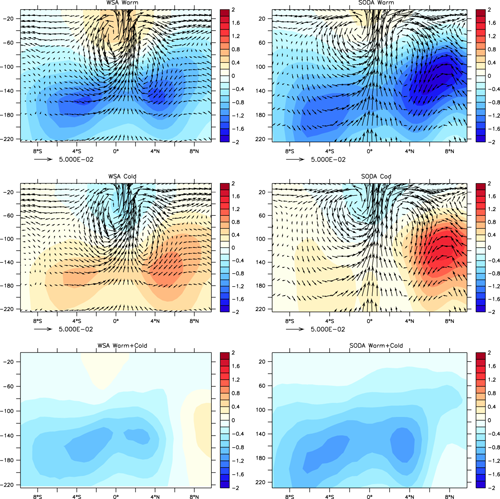The asymmetry of subsurface temperature anomalies associated with ENSO in the equatorial western Pacific
Date:2014-11-15
The authors investigate the temperature asymmetry in the subsurface of the western Pacific through analysis of observations and numerical experiments with an ocean GCM. Heat budget analysis reveals that nonlinear dynamical heating tends to weaken the negative temperature asymmetry in the equatorial western Pacific. The climatological meridional current transports the temperature anomalies and corresponding negative asymmetry from the off-equator region to the equator in the subsurface of the western Pacific. The study suggests that, as a result of nonlinear processes, the oceanic responses to anomalous wind stress are nonlinear and asymmetric in the tropical Pacific.
Citation: Hua, L.-J., and Y.-Q. Yu, 2014: The asymmetry of subsurface temperature anomalies associated with ENSO in the equatorial western Pacific, Atmos. Oceanic Sci. Lett., 7, doi: 10.3878/AOSL20140067.
Download: http://159.226.119.58/aosl/EN/abstract/abstract515.shtml#

Temperature anomalies averaged in the western Pacific Ocean (120°E–160°W) and the corresponding climatological mean current for the (top panels) warm phase, (middle panels) cold phase, and (bottom panels) residual (warm+cold) in WSA (left panels) and SODA (right panels) (units: °C). Units for the mean meridional currents (V) and vertical currents (W) are 1 and 0.0001 m s?1, respectively.
